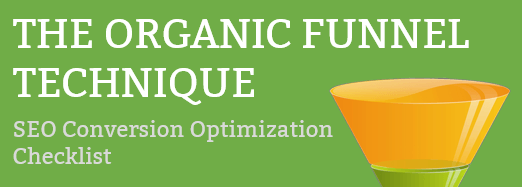
Homepage Changes You Can Make To Increase Conversions
If your homepage isn’t converting visitors into customers, you are missing out on possible sales.
Your homepage is probably the most visited page on your website. For the majority of websites, it typically receives more than 50% of all visitor traffic compared to the other pages on the website. Considering the amount of traffic it has, you should consider the homepage more like a Landing Page designed to convince visitors to learn more about how you can solve their needs. So if your homepage doesn’t drive visitors to take some type an action, then it can be improved to drive more sales.
Goals Of A Great Homepage
A homepage has three distinct goals.
- Identify with the Visitor Needs. In most cases, someone visiting your website is there to solve a need they have. If visitors are unable to determine within 5 seconds that you are capable of solving that need, they will leave. Your message must be crystal clear and very obvious. Don’t make people read your first paragraph to understand what you do because they will bounce away to find someone else.
- Create a Memorable Experience. Visitors are much less tolerant of a bad website these days. Poorly designed websites are equated with a business that either doesn’t care about their brand or doesn’t care about their customers. Your website is at the core of all marketing activity. So if your brand image is suffering, it leaves a lasting impression with your visitors.
- Help the Visitor Toward Desired Action. If the visitor believes you can solve their need, don’t make it hard for them to understand what to do next. Make it obvious what you want them to do. The visitor should be drawn further into the site to take the next step and become more engaged with your company. Don’t leave them guessing or they will leave your site.
Homepage Conversion Actions
There are a number of different possible actions that a visitor to the homepage could take. All of these are measurable. You should measure what changes to the homepage are impacting conversions. Here is a sample of things you can measure to see if your homepage is as effective as it can be.
- Visited Another Page. This is the main action most sites have now. Usually, visitors will click on one of the main links or graphics shown on the homepage to take the further into the site. Believe it or not, it may not be your main menu. Lots of heatmap studies show that people are more inclined to click on a link/graphic on the homepage rather than using the menu. This isn’t true once they get further into the site, but on the homepage, the menu isn’t generally used as often.
- Call To Action. A button or clickable element within the top header or further down in the page can be a great motivator to get people to visit more of your website. Be sure not to hide your CTA, but make it obvious. You can use more than one CTA on the homepage as well.
- Filled Out a Form. Many websites have forms on their homepage, especially web based services that want to sign you up as quickly as possible. Be sure not to use really long forms. Your goal is to quickly convert and long forms are anything but quick.
- Watched a Video. Video is obviously becoming increasing valuable to businesses because they are finding it can create faster engagement with visitors than forcing them to read a lot of content. On the homepage, any video should be pretty short and very enticing. Because there are rarely any conversion actions to take during a video, be sure to communicate what visitors should do next if they watched to the end.
- Read the Content. This doesn’t seem like much of a conversion action, but it is an important one. You can see in your web analytics how long visitors, on average, stay on a page. This will give you an indication of how much they are engaging with your content. If it is less than 10 seconds, they are just bouncing away. But longer than that and they may be engaging with you.
Additional Tips and Thoughts
So far most of what we’ve been talking about surrounds the conversion, but there are some other critical elements to consider on the homepage that will help drive traffic and conversions.
- Title and Meta Description. Your page title and meta description are extremely important elements that don’t visibly show within your content, but are behind the scenes. The Title and Description are what are shown in search engine results. Additionally, the search engines use the Title as a major part of understanding what the page is about. The Meta Description doesn’t impact search engine results, but you want it speak to someone who sees your listing on search results. Google has some good insights on how to create these.
- Banners and Sliders. If you feel the urge to use a slider (multiple images showing one after the other), try to avoid them. They are great for getting lots of messages to show, but in general, they have been repeatedly shown to convert fewer people than a well-designed single banner and message. If you want some animation, use a single background image and animate the text and any additional images that appear in front of the background. Remember to make your main message pertinent to what the visitor needs.
- Proper Tags for SEO. Search engines like structured data. This helps them understand what your pages are about. Assuming you want to try and rank better in search engines, you want your homepage content to have some structure to it. At a minimum, you want to make sure you have an H1 tag on your page. H stands for Heading. It is used like a paragraph tag in your HTML. This is a critical element for search engines. This H1 can be the main needs statement on your homepage. But when possible, make sure it contains the main keyword/phrase you are targeting for search results. H2 tags can also help you out. H2 tags are a subset of H1 and help search engines understand what the content is beneath them relative to the H1 tag. Be sure not to use more than one H1 tag.
- Good Navigation. Navigation is the main thing people will use to move through your website. True, it may not be the main click action on the homepage, but it should stay consistent throughout your website. Make sure it is very easy to read. If you use drop down menus, be sure the links beneath are also easy to read and that the content behind them is very relevant to the menu title. Some sites will use two separate menus in their header. Try and avoid these when you can unless you have a huge amount. Multiple menus tend to confuse your audience.
- Readability. Be sure your audience can easily read everything you have to say. This means using readable font styles and sizes. It also means using enough contrast so that people don’t have to squint to read it. Anything that hinders the experience will turn people away.

